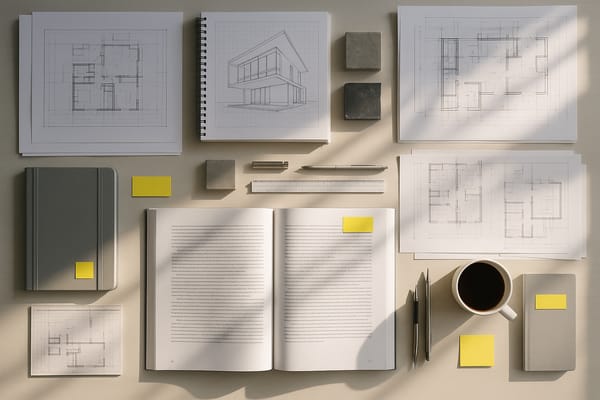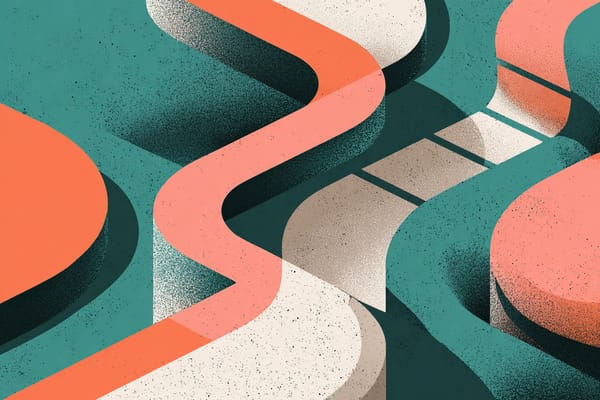The Tools That Built You Won’t Build What’s Next
“You’re not starting over—you’re starting forward.”

There’s a point in every creative career where what once worked stops working.
You followed your instincts, built a style, and found your rhythm. Maybe you even landed dream clients. But then, progress stalls. Momentum fades. What once felt like your edge starts feeling like your limit.
And it hits you:
The tools that built you won’t build what’s next.
It’s not failure—it’s friction. A sign you’ve outgrown your current toolkit but haven’t yet upgraded your mindset, methods, or map.
For freelancers, designers, and creatives, that moment is critical. You can either cling to what made you successful once, or you can evolve into what the next version of your creative life demands.
The Myth of Permanent Formulas
One of the most dangerous lies in creative work is that success has a fixed formula:
- Post consistently.
- Build a recognisable style.
- Be professional. Be fast. Be visible.
But the reality is every stage of your journey demands different tools.
The mindset that helps you get your first few clients isn’t the same one that will help you raise your rates.
The process that helped you crank out poster 001 isn’t what you need when you’re managing a multi-part campaign.
The style that got you noticed may need to evolve—or you risk it becoming your creative ceiling.
It’s not about abandoning what worked. It’s about recognising when the game has changed—and changing with it.
How to Know You’ve Hit a “Next Chapter” Moment
It’s not always dramatic. Often, the signs show up subtly at first:
- Work feels repetitive, even when the client is happy.
- You’re getting fewer enquiries or growing tired of saying yes to the same type of brief.
- You feel envious or distant from other creatives’ work—not because it’s better, but because it’s freer or more ambitious.
- You sense that your growth has plateaued, but you’re unsure what the next step should be.
In those moments, it’s tempting to double down on what’s familiar. You think I just need to do it better. But often, it’s not about better—it’s about different.
Why Growth Often Feels Like Loss
Let’s be honest: change is hard when you’ve finally figured out what works.
You spent years learning your craft, refining your voice, and getting known for something. The idea of shifting can feel like throwing that away.
But you’re not starting over—you’re starting forward.
Think of it like software. Version 1.0 got the job done. But over time, bugs show up. New user needs emerge. Better integrations become available. The only thing worse than a broken product is an un-updated one.
You’re not ditching your history. You’re using it as a base for the next release.
From Plateau to Progress: Three Creative Stages
To move beyond what used to work, you need to understand where you are now.
Most creatives shift through three core stages:
Proving Yourself
You’re finding your voice, showing your ability, and building trust.
Tools: volume, consistency, speed
Challenges: imposter syndrome, underpricing, saying yes to everything
Success looks like: building momentum, getting booked, and growing confidence.
Establishing Your Identity
You’ve found a groove. You’re known for something. Work is steady, but maybe a bit predictable.
Tools: clarity, confidence, refinement
Challenges: burnout, pigeonholing, creative stagnation
Success looks like: repeat clients, recognition, and reliable income.
Reinvention and Expansion
You want more—creatively, professionally, and financially. You’re craving growth—or simply new terrain.
Tools: experimentation, strategic risk, curiosity
Challenges: fear of breaking what works, uncertainty, temporary obscurity
Success looks like: breakthroughs, new audiences, and deeper satisfaction.
Most freelancers get stuck between stages 2 and 3. Reinvention demands discomfort. But that’s also where the real breakthroughs live.
Practical Ways to Move Beyond the Familiar
Here are five actionable shifts to help you get unstuck—and get moving again.
Audit Your Creative Routine
Ask yourself: What do I do by default? What do I avoid?
Chances are, your routine is optimised for yesterday’s version of success. Shake it up. Try:
- Changing your creative tools
- Working in a new format (print to motion, still to 3D, flat to dimensional)
- Reducing your output to focus on depth, not volume
Routines should serve your evolution—not preserve your comfort.
Raise the Stakes
One way to grow is to take on work that scares you a little. The kind where you’re not quite sure how to pull it off yet.
Stretch projects, whether self-initiated or client-led, trigger new skills and break old habits.
Example: If you’ve made 500 static posters, try a kinetic one—not for the algorithm, but to challenge what you think you can do.
Kill Your Darlings (Gently)
You don’t have to erase your old identity—but you may need to loosen your grip on it.
If you’re known for minimalism, try messy. If you’re known for dark, try light. If you’ve used the same typeface for 10 years, retire it—for now.
The rules that built your name might now be the walls around it.
Learn What’s Emerging (Before You Need It)
You don’t need to chase every trend. But you do need to stay aware.
Watch what younger designers are doing. Explore platforms outside your comfort zone. Peek into tools that feel unfamiliar. Subscribe to newsletters or creators in adjacent industries.
The goal isn’t to copy—it’s to contextualise. To see where creative energy is moving and decide how (or if) you want to follow it.
Ask: “What’s the next level of creative risk for me?”
For some, it might be finally sharing personal work online.
For others, it’s saying no to underpaying clients.
Whether it’s building a course, applying for a residency, or raising your day rate…
Growth often starts with one uncomfortable decision. Pick yours—and move.
Final Thoughts: Build the Bridge While You Walk It
“The tools that built you won’t build what’s next” isn’t a threat. It’s a challenge. A prompt. An invitation.
You’ve already proved you can build something out of nothing. Now the question is: Can you build something new from something established?
The worst place for a creative is not on the bottom rung. It’s on a comfortable plateau. Because from there, it’s easy to drift into autopilot.
So don’t wait for burnout or boredom to force your hand. Be proactive. Be curious. Be brave enough to leave the version of you that once worked—for the version that works now.
You don’t need to abandon your past. Just refuse to let it define your ceiling.



